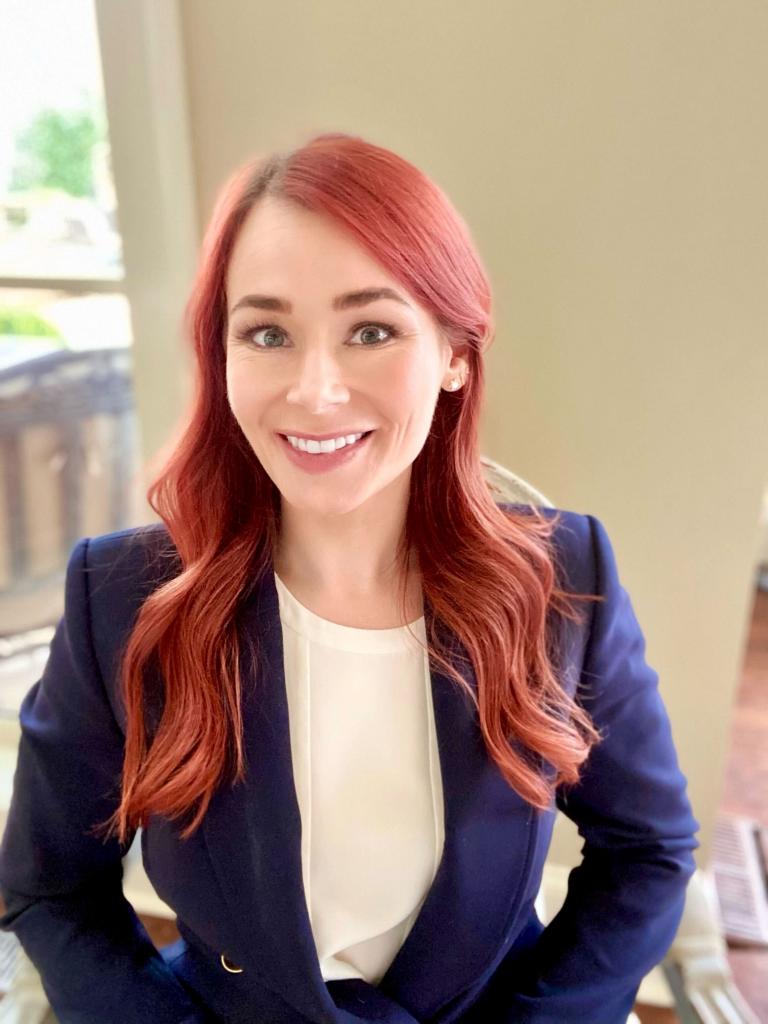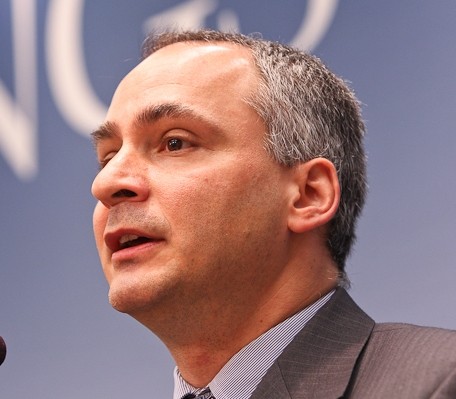Not Quite the Indictment We Were Expecting Today
Published by The Lawfare Institute
in Cooperation With

The day began with wide expectations that it would be a Trump indictment day. The expectations turned out to be correct, but not for the reason analysts expected. The Jan. 6 grand jury in Washington, D.C. showed up in the morning and met all day, but no indictment was issued, even as the former president’s lawyers met once again with Special Counsel Jack Smith’s prosecutors in a bid to head off charges. Those charges are surely coming, but they did not come today.
What did come today was a superseding indictment in the Southern District of Florida in the Mar-a-Lago documents case. The new indictment does not shake the heavens or rock the ground, but it does name a new defendant, describe a new fact pattern, add some significant new charges, and add an additional highly-classified document to the 31 charged in the original indictment.
The new defendant is a gentleman named Carlos De Oliveira, whom the indictment describes as the property manager at Mar-a-Lago. The new fact pattern, in the indictment’s words, are that Trump and his codefendants “attempted to delete security camera footage at the Mar-a-Lago Club to conceal information from the FBI and grand jury.” The new charges relate to this effort to delete security camera footage and also to Trump’s retention of the new document. That new document, in turn, is the one he showed at his Bedminster club to staff and writers in an attempt to discredit Gen. Mark Milley in the recorded conversation described in the original indictment.
We will not endeavor here to describe the entire indictment, most of which is not different from the original version. As we have already described that indictment in depth, we will not repeat the exercise. Instead, we will focus only on what is new in the superseding indictment, assuming a certain reader familiarity with the previous version. Readers who need a refresher on the Mar-a-Lago case should read the prior post before continuing.
A New Defendant
The indictment offers only spare information about the new codefendant, De Oliveira. Paragraph 10 says only that “Beginning in January 2022, Defendant CARLOS DE OLIVEIRA was employed as the property manager at The Mar-a-Lago Club. Prior to holding the position of property manager, DE OLIVEIRA was employed as a valet at The Mar-a-Lago Club.” New York Times reporter Katie Benner reminds us that “De Oliveira is the employee who allegedly drained the pool at Mar a Lago and flooded the room that housed computer servers with the surveillance video logs.” That incident, while not specifically charged in the current superseding indictment, was much in the news at the time of the original indictment. As CNN reported on June 5:
An employee at Donald Trump’s Mar-a-Lago residence drained the resort’s swimming pool last October and ended up flooding a room where computer servers containing surveillance video logs were kept, sources familiar with the matter told CNN.
While it’s unclear if the room was intentionally flooded or if it happened by mistake, the incident occurred amid a series of events that federal prosecutors found suspicious.
At least one witness has been asked by prosecutors about the flooded server room as part of the federal investigation into Trump’s handling of classified documents, according to one of the sources.
The pool draining does not feature in the superseding indictment, but the attempted destruction of video surveillance camera evidence is central to the new material in it.
A New Fact Pattern
That begins in earnest on page 27, where the indictment begins laying out allegations that Trump, Nauta, and De Oliveira attempted to wipe the security camera footage at Mar-a-Lago Club to conceal information from the FBI and the grand jury.
The indictment alleges that FBI agents showed up at Mar-a-Lago on June 3, 2022 to collect documents with classification markings from Trump’s attorneys. At that time, the agents observed surveillance cameras located near the storage room in which Trump’s boxes of material—including classified material he was not entitled to retain—had been stowed. On June 22, the Justice Department emailed Trump’s attorney a draft grand jury subpoena requiring the production of security camera footage from Mar-a-Lago, including the footage from the storage room. Two days later, on June 24, the Justice Department emailed the same attorney the final grand jury subpoena, requiring the production of surveillance records from January 10, 2022, to June 24, 2022. That same day, Trump’s lawyer notified the former president about the subpoena, the indictment alleges, and Trump contacted Nauta, through an underling the indictment identifies as Trump Employee 3, and asked to see him.
As Nauta began making travel plans to Palm Beach, he and De Oliveira contacted a different Trump employee, identified as Trump Employee 4, who was the Director of Information Technology (“IT”) at Mar-a-Lago Club. Nauta allegedly inquired if Trump Employee 4 was working that weekend. And Trump Employee 4 responded that he was not.
Nauta traveled from Bedminster, New Jersey to Palm Beach, Florida on Saturday, June 25, the indictment states, and he attempted to keep his travels secret. That evening, at 5:46 p.m., he and De Oliviera walked to the security guard booth, where surveillance video is displayed on monitors, then through a tunnel to where the storage room was located, and he pointed out the surveillance cameras, prosecutors allege.
That Monday, on June 27 at 9:48 a.m., the indictment states that De Oliveira visited the information technology office and requested that Trump Employee 4 walk with him through the basement tunnel to a small room known as the “audio closet,” where De Oliveira told Trump Employee 4 that “‘the boss’ wanted the server deleted.” Trump Employee 4 allegedly said that he neither knew how to delete the server, nor did he believe he had the right to do so and told De Oliveira to “reach out to another employee who was a supervisor of security for Trump’s business organization.”
Later that afternoon between 1:31 and 1:50 p.m., the special counsel alleges that “De Oliveira walked through the bushes on the northern edge of The Mar-A-Lago Club property to meet with Nauta on the adjacent property; then walked back to the IT office … and then walked again through the bushes … to meet Nauta on the adjacent property.” At 3:55 p.m., Trump called De Oliveira and they spoke for a few minutes.
In July 2022, the indictment alleges, the FBI and grand jury obtained and reviewed surveillance video from Mar-a-Lago showing the movement of boxes. (Recall that the original indictment alleges that Nauta moved boxes out of storage, apparently for Trump’s review, and moved many fewer boxes back—suggesting that when Trump’s attorney searched the remaining boxes for classified material to return, he searched only a fraction of the material he was supposed to.) On August 8, the FBI executed its court-authorized search warrant of the property and seized 102 documents with classification markings.
Later that month, on August 26, Nauta called Trump Employee 5 and inquired if “‘Carlos [De Oliveira] is good.’” Trump Employee 5 assured Nauta that “De Oliveira was loyal and that De Oliveira would not do anything to affect his relationship with Trump.” Trump Employee 5 later sent a message to Nauta and the PAC Representative discussed elsewhere in the indictment over Signal group chat that De Oliveira was loyal.
That same day, the indictment alleges, Trump called De Oliveira and told him that he would get De Oliveira an attorney.
The New Charges
The superseding indictment adds four new counts, in addition to the additional defendant.
Trump, De Oliveira, and Nauta are all charged with two new obstruction counts relating to their request that the Trump employee delete security camera footage. The first, Count 40, is charged under 18 U.S.C. § 1512(b)(2)(B), which prohibits the use of intimidation, threats, or corrupt persuasion with intent to “alter, destroy, mutilate, or conceal an object with intent to impair the object’s integrity or availability for us in an official proceeding.” In this case, this refers to the attempted deletion of footage by way of making it unavailable to a federal grand jury.
The second, Count 41, is charged under 18 U.S.C. § 1512(c)(1), which prohibits the same conduct, destruction of evidence, when done by a defendant directly rather than by intimidating others.
De Oliveira is charged with false statements and representations to law enforcement in connection with his voluntary interview with the FBI on Jan. 13, 2023 (Count 42, charging 18 U.S.C. § 1001(a)(2)). A transcript of his recorded interview is set forth in the indictment. When asked whether he was aware of boxes that had arrived at Mar-a-Lago and whether he had helped move the boxes, De Oliviera had responded in the negative.
The indictment alleges that these statements were false because De Oliveira had “personally observed and helped move Trump’s boxes when they arrived” at Mar-a-Lago. The timing of De Oliviera’s interview with the FBI means that of all three defendants, he is accused of repeated acts of obstruction over the longest period of time—beginning in May 2022 and lasting through January 2023.
Trump is also charged with an additional count under the Espionage Act, 18 U.S.C. § 793(e) for unlawful retention of National Defense Information.
The New Charged Document
The additional Espionage Act charge under section 793(e) relates to a now well-known set of facts: the July 21, 2021, meeting at Trump’s Bedminster country club at which Trump shared a copy of a classified document relating to possible military operations on an unnamed country (reported to be Iran) with uncleared individuals working on a book (reported to be Mark Meadows’ biography).
The superseding indictment itself does not add much substance to the account of this event provided in the original indictment, and it includes the same transcript of Trump’s conversation—in which he appears to acknowledge the classified nature of the document he is sharing and his inability as a former president to declassify it. (An audio recording of that conversation has since been made public.) The superseding indictment states expressly, however, that the document—described as a “[p]resentation concerning military activity in a foreign country” classified as “TOP SECRET//NOFORN”—is the basis for the additional section 793(e) charge, which is the 32nd listed in the superseding indictment. (There were only 31 in the original indictment.)
The special counsel’s decision to include this additional charge is an interesting one, as the relevant facts would presumably have been known to him and his team at the time of the original indictment. Its inclusion now may reflect a desire to discuss the document in more detail during trial or a successful effort to overcome possible interagency barriers to partial or full declassification. Or it may be an indication that the special counsel does not intend to move forward with charges at Bedminster and is instead seeking to bring at least some charges related to the disclosure there as part of this prosecution instead.
Other details, however, suggest that this might not be the case. The new 32nd section 793(e) charge is different from the prior ones in one important detail: the period of time to which it relates.
All 31 of the prior section 793(e) charges covered the period from January 20, 2021 (when Trump ceased to be president) through either June 3, 2022 (when Trump returned certain documents to the FBI in response to a subpoena) or August 8, 2022 (when the FBI recovered other classified documents in its search of Mar-a-Lago).
But the new 32nd charge only covers the period from January 20, 2021, through January 17, 2022. Notably, this is the day on which, according to the indictment, Nauta gathered 15 boxes of documents from Mar-a-Lago and took them to a commercial truck for delivery to NARA. NARA’s subsequent review of these boxes is what found classified documents within them and led NARA to refer the matter to the Justice Department in February 2022. While the indictment does not say as much expressly, a reasonable inference may be that this document was among those returned to NARA in that initial set of boxes, which would have ended Trump’s alleged unlawful possession of it.
Of course, for this to be the same document that Trump shared with third parties at Bedminster, it would have either had to have traveled from Mar-a-Lago (where Trump’s various documents were originally taken to from the White House) to Bedminster (where it was shown to third parties in July 2021) back to Mar-a-Lago (from which it was returned to NARA in January 2022) or there would have had to be multiple copies of the document in different locations.
While the latter is not alleged in the indictment, it would be consistent with other investigative steps the Justice Department has reportedly undertaken, which suggests that it may have believed at one point that Trump may have been in possession of at least one additional copy of the same document at Bedminster.
Specifically, the Justice Department reportedly subpoenaed Trump for the document discussed in the July 2021 Bedminster meeting—a step that could only have been pursued after NARA’s February 2022 referral of the documents investigation to the Justice Department. After Trump indicated he could not locate the document at Bedminster, the Justice Department reportedly even considered seeking a search warrant for Bedminster similar to the one it secured for Mar-a-Lago, but ultimately opted not to because of concerns that the FBI lacked probable cause for the search—a concern that may have been prompted by the fact that the Justice Department had already recovered one copy of the document in question.
Instead, the Justice Department reportedly decided to challenge the adequacy of Trump’s search in related litigation before a federal district court in Washington, D.C., the results of which are not publicly known. Together, these efforts may suggest that investigators believed (and may still believe) that additional copies of the document in question are out in the wild.
Conclusion
The Special Counsel’s office argues that the superseding indictment should not alter Judge Aileen Cannon’s scheduling order, issued less than a week ago on July 21, 2023. That order includes various pre-trial litigation deadlines and sets a trial date of May 20, 2024. This order, while not as ambitious as the government’s proposed schedule, is nonetheless speedy given the volume of classified material at issue in the case. Whether it’s realistic or not, the government is probably right that the additional charges and allegations do not materially change the scheduling. The document at issue in Charge 32, after all, was already at play in the case, so the volume of classified discovery should be largely unchanged. And while the additional obstruction charges will necessitate additional unclassified discovery, both to De Oliveira and to Trump and Nauta, these allegations are garden variety obstruction matters that shouldn’t require a great deal of additional litigation.
The bottom line is that today’s events did not fundamentally change the Trump criminal litigation landscape. It made it marginally worse for the former president, and a lot worse for one of the former president’s employees.
The big change is still coming—and it’s coming soon.






-final4d43.png?sfvrsn=b70826ae_3)
